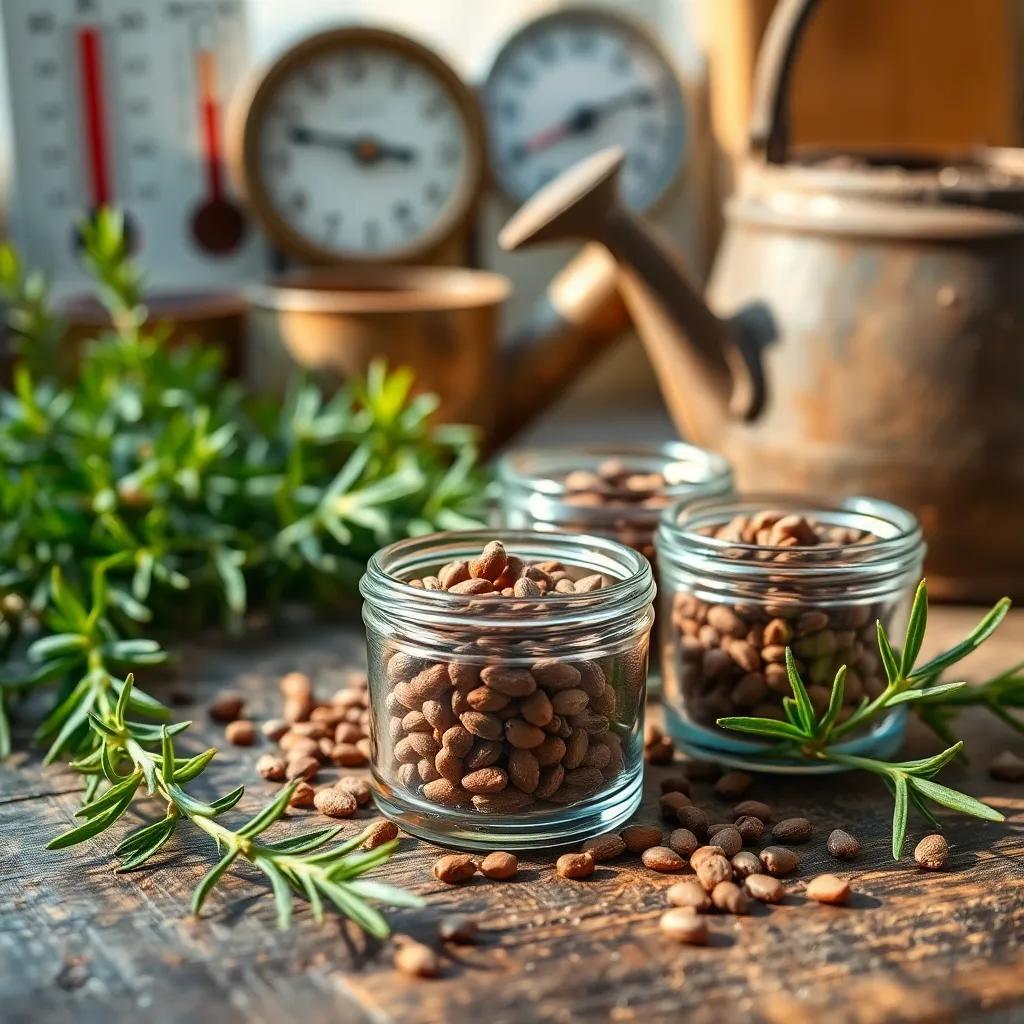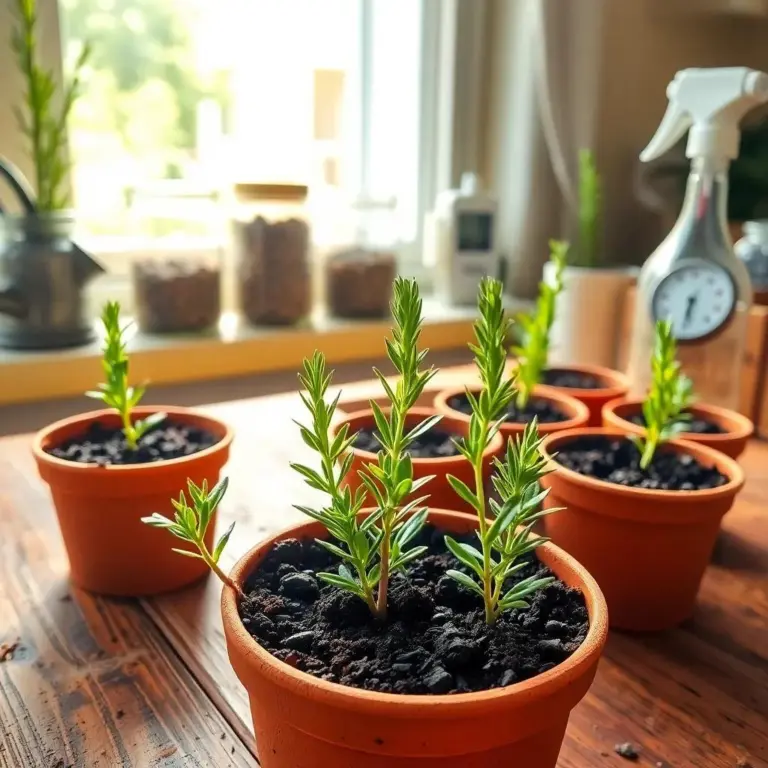Are you ready to grow your very own rosemary plants and fill your garden with that delightful aroma? I love the idea of starting from seeds, and it’s easier than you might think! In this article, I’ll share everything you need to know about how long it takes for rosemary to germinate, along with tips and tricks to help you succeed—so grab your gardening gloves and let’s get started!
Understanding Rosemary Seed Germination Timeframes
When it comes to growing rosemary, timing is everything! So, how long does it actually take for these little seeds to sprout? Well, the magic number typically falls between 15 to 30 days. Yes, that’s right—patience is key! Sometimes, it feels like waiting for a cake to bake, but a little patience can lead to a great reward!
Several factors can affect this timeframe. For instance, if the seeds are nestled in their comfy warm spot and get just the right amount of moisture, they might surprise you and sprout quicker! Here’s a little breakdown to help you understand what to expect:
- Temperature: Ideally, rosemary seeds love a warm environment, about 65-75°F (18-24°C). If it’s too chilly, they’ll be slower to wake up!
- Seed Quality: Fresh seeds from reputable sources usually germinate faster than older, less reliable ones. So, always check the seed packet before you start!
- Light and Moisture: While they don’t need light to germinate, a bit of indirect light later on helps them grow strong. As for moisture, keeping the soil just right—not too wet and not too dry—is essential.
You might feel like you’re waiting for a bus that never comes, but don’t lose heart! The germination process can vary, so keep an eye on your little green friends and give them the attention they need. With a little TLC, soon enough, you’ll see those tiny seedlings peeking through the soil, eager to grow!
Factors Influencing Rosemary Seed Germination
Now that we know the timeframe, let’s chat about what can make a significant difference in the germination success of rosemary seeds. Just like us, seeds have their preferences! If they’re happy, they’ll sprout more easily. Here are some key factors to keep in mind:
- Seed Quality: High-quality, fresh seeds kickstart the germination process. Carefully select your seeds from trusted sources, as this can be the difference between a thriving rosemary plant and a sad, wilted one.
- Moisture Levels: Too much water? Yikes! Too little? Oh no! The sweet spot is keeping the soil consistently moist but not soggy. Think of it like a sponge after squeezing it out; it should be damp but not dripping!
- Temperature: As I mentioned, these seeds love warmth! A cozy climate of 65-75°F (18-24°C) will help them burst to life. If it’s too cold, they may just snuggle deeper into the soil.
- Air Circulation: We all need some good airflow, right? Seeds do, too! Proper ventilation helps prevent mold and allows your seeds to thrive.
By keeping an eye on these factors, you’ll boost your chances for successful germination. So get ready for those beautiful rosemary plants that will soon grace your garden! 🌱

Ideal Conditions for Successful Germination
Getting rosemary seeds to sprout is like making the perfect cup of tea—it’s all about the right conditions! For those little guys to thrive, you need to create a cozy atmosphere that meets their needs. Let’s break down what these ideal conditions are, so you can foster a healthy germination environment!
- Growing Medium: Start with a well-draining potting mix. Rosemary doesn’t like soggy roots, so a light, airy mix is best. Consider using a mix that contains perlite or sand to help with drainage.
- Moisture Levels: Keeping the soil just right is crucial! Before planting, lightly moisten the medium, but don’t drown it. A good gauge is when the soil feels like a damp sponge. Once you’ve planted the seeds, cover them with a thin layer of soil—just enough to keep them cozy but not buried too deep!
- Temperature: Rosemary seeds love warmth. Aim for a consistent temperature between 65-75°F (18-24°C). If your home gets a bit chilly, a heating mat can be your best friend!
- Light: While the seeds don’t need light to germinate, they’ll appreciate it later on! Once they sprout, give them 12-16 hours of indirect light each day—like a nice sunny spot by the window. Just remember, no direct sunlight yet, or they might get too hot!
By providing these conditions, you’ll help your rosemary seeds flourish! Watch for those little green shoots, and enjoy the process—it’s an exciting adventure in gardening! 🌱
Common Challenges in Rosemary Seed Germination
As much as I’d love to say that growing rosemary is a piece of cake, the truth is, challenges can pop up! Let’s take a look at some common issues you might face when trying to get those seeds to germinate. Don’t worry, I’ve got the solutions right here!
- Slow Germination: If your seeds seem to be taking their sweet time, check the temperature and moisture levels. If they’re too cold or dry, gently adjust those conditions. Sometimes, a little extra warmth or moisture can work wonders!
- Mold or Fungal Growth: Uh-oh! If you see fuzzy stuff on your soil, that’s likely mold. To combat this, avoid overwatering. Remember, rosemary likes it like Goldilocks—just right! Increasing air circulation around your planting area can help, too!
- Damping Off: This nasty little problem affects young seedlings, causing them to wilt and die. It’s often due to overly wet soil. To prevent this, use a sterilized potting mix and avoid overcrowding your seeds. Proper airflow is key.
- Poor Seed Quality: If you notice low germination rates, it could be because of the seeds themselves. Always source your seeds from trusted suppliers. If you’re iffy about a batch, try conducting a germination test with a few seeds first to check their viability!
Remember, every gardener faces challenges! It’s all part of the process. By staying vigilant and making small adjustments, you’ll be well on your way to a healthy rosemary harvest!
Techniques to Enhance Rosemary Germination Rates
Ready to give your rosemary seeds a little boost? There are several techniques I love to employ that can really help with germination rates! Let’s explore some fun methods to make those seeds feel extra special.
- Scarification: Rosemary seeds have a tough exterior that might slow them down. Help them out by scarifying—just rub the seeds gently with fine-grit sandpaper or soak them in warm water for a couple of hours before planting. This will soften their coats and allow them to absorb moisture more easily.
- Pre-soaking: Speaking of soaking, don’t forget this simple trick! Submerging your seeds in warm water for 24 hours before planting can kickstart the germination process. It’s like giving them a warm bath!
- Bottom Heat: As mentioned earlier, rosemary loves warmth. Using a heating mat or placing the seeds on a sunny windowsill can provide the warmth they crave. Just be careful not to overheat them!
- Grow Lights: After germination, I recommend using fluorescent grow lights if you don’t have enough natural light. Position the lights about 2-4 inches above the seedlings for about 12-16 hours a day to promote healthy growth.
- Humidity and Moisture Control: To keep the humidity levels up, you can cover the seed trays with a clear plastic dome or wrap them with plastic wrap (with holes for ventilation). This keeps the moisture in and creates a cozy environment.
By using these techniques, you’ll greatly increase your chances of successful germination! So roll up your sleeves, mix and match these methods, and watch your rosemary thrive! Happy planting! 🌿

